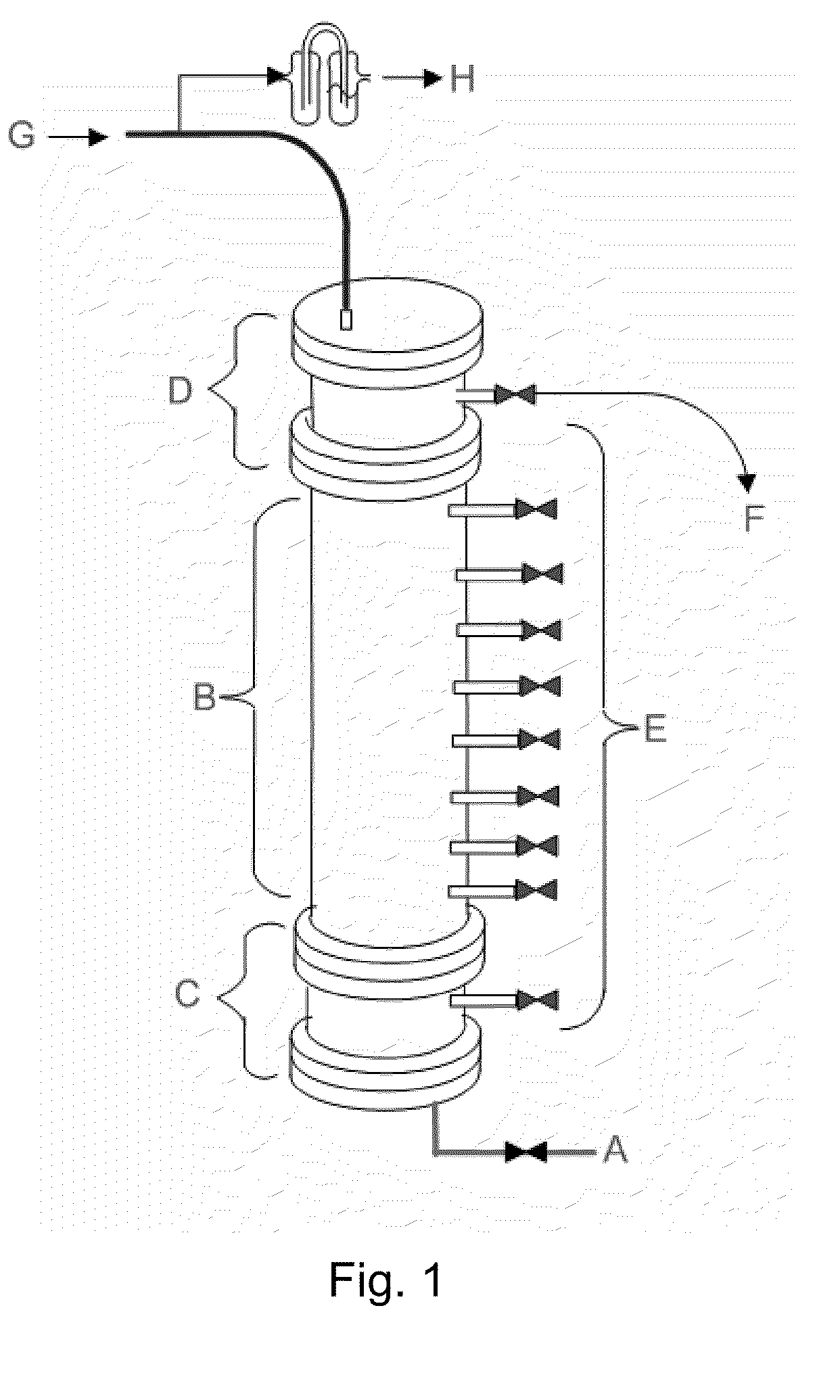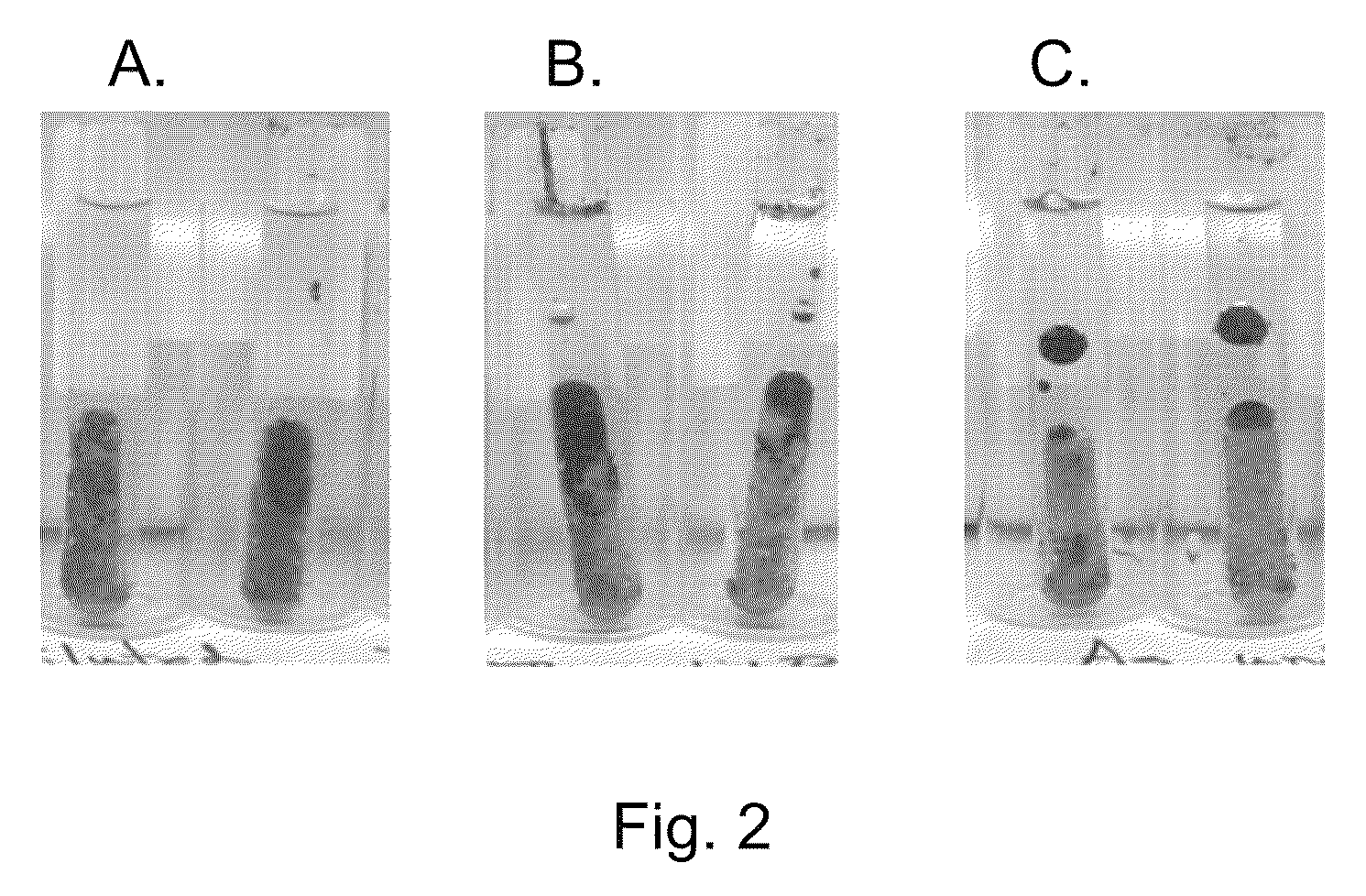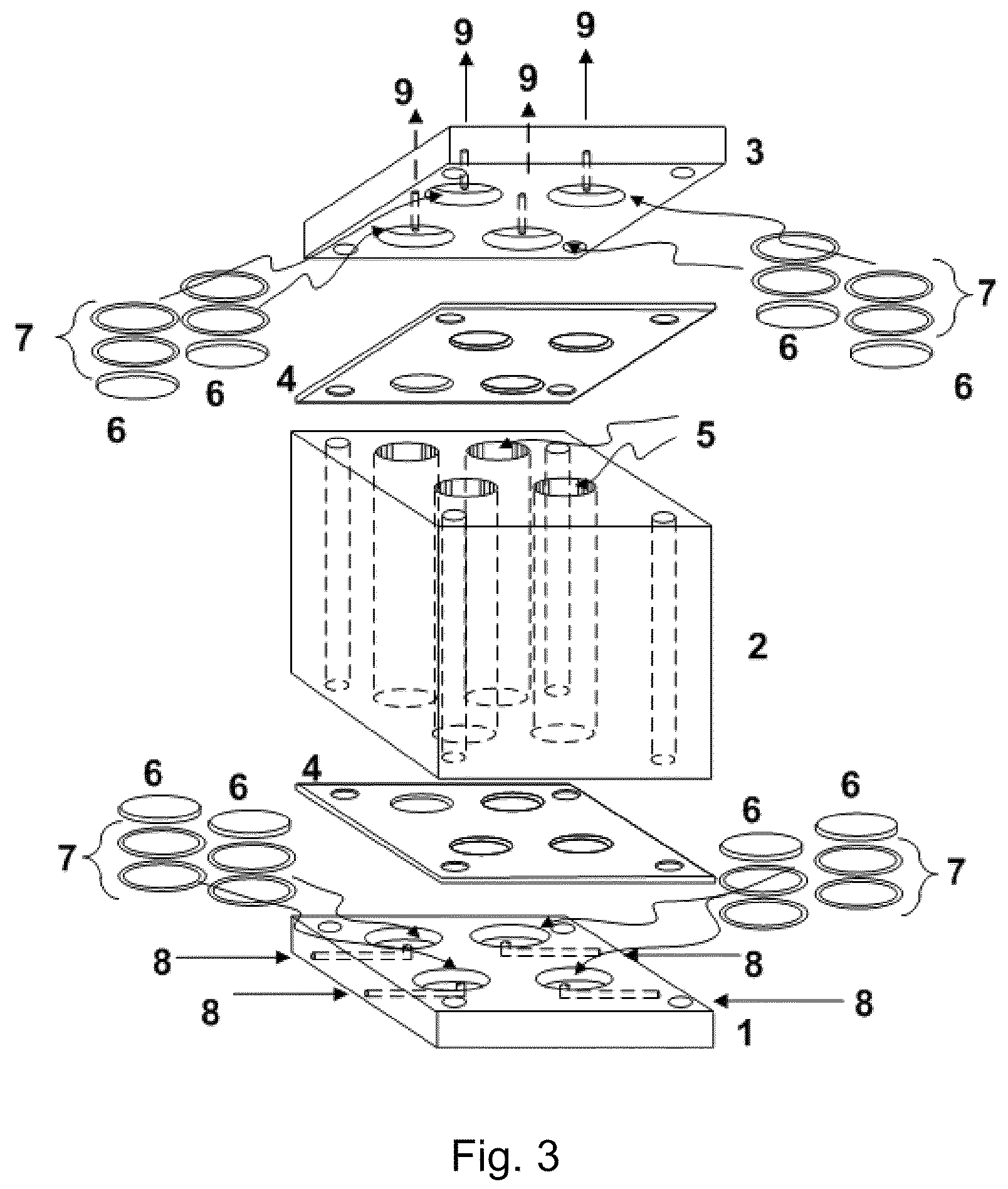Identification, characterization, and application of Pseudomonas stutzeri (LH4:15), useful in microbially enhanced oil release
a technology of pseudomonas stutzeri and oil release, which is applied in the field of environmental microbiology and modification of heavy crude oil properties using microorganisms, can solve the problems of limited observation of anaerobic degradation, essentially immobile, and inability to recover by conventional primary and secondary means, so as to enhance the economic recovery of oil and enhance the oil recovery
- Summary
- Abstract
- Description
- Claims
- Application Information
AI Technical Summary
Benefits of technology
Problems solved by technology
Method used
Image
Examples
example 1
Anaerobic Growth of Bacterial Isolates on Oil as the Sole Carbon Source
[0079]To study growth of isolated colonies on crude oil as the sole carbon source under anaerobic conditions, purified isolates were inoculated into 20 mL-capacity serum vials containing 10 mL of the minimal salts medium (Table 3), 0.4 g / l sodium nitrate and 5.0 mL of autoclaved crude oil. The medium was deoxygenated by sparging the filled vials with a mixture of nitrogen and carbon dioxide followed by autoclaving. All manipulations of bacteria were performed in an anaerobic chamber (Coy Laboratories Products, Inc., Grass Lake, Mich.), and the cultures were incubated at ambient temperature with moderate shaking (100 rpm) for several weeks to several months and monitored for nitrate, nitrite, visible turbidity and visible oil modifications. When nitrate was depleted in any culture, sodium nitrate (50 g / l solution) was added to the medium to the final concentration of 0.4 g / l.
[0080]
TABLE 3MINIMAL SALTS MEDIUMFinalC...
example 2
Screening of Bacterial Isolates for Enhanced Oil Release
[0083]In this Example, a single colony of each isolated strain was used as the inoculum and grown to turbidity in the minimal salts medium defined in Table 3 with added 0.4% succinate as the carbon source. The concentration of each species was normalized to OD600 of 1.0 or diluted 1:10 for a final OD600 of 0.1. All operations for preparation of the micro sand columns, inoculation and growth were performed using sterile technique in an anaerobic glove bag. Inocula (4 mL) from either the OD600 of 1.0 or OD600 of 0.1 were added to small glass tubes and the micro sand columns immersed in the medium / cell mixtures with the narrow neck of the Pasteur pipets pointing up. The outer vials were sealed in the anaerobic chamber and allowed to incubate at ambient temperatures for 24 hr. Table 5 shows the strains tested and the observations of oil release after 24 hr.
[0084]
TABLE 5RELEASE OF OIL FROM MICROSAND COLUMNS BYISOLATED BACTERIAL STRA...
example 3
Screening of Bacterial Isolates for Hydrophobicity
[0086]Since there is a direct correlation between cell surface hydrophobicity and surfactant production in many hydrocarbon-associated microbes, the purpose of this example was to test LH4:15 for hydrophobicity. The test was conducted as described above. FIG. 4 shows the results of the hydrophobicity testing of five different microbes. Rhodococcus sp. was used as the positive control for hydrophobicity. Rhodococcus species are known to have a highly hydrophobic surface (Bredholt, H. et al., Can. J. Microbiol., 48, 295-304, 2002). Vibrio cyclotrophicus was used as the negative control. Fluorescence was corrected for differences in OD across samples. As can be seen in FIG. 4, LH4:15 adhered to the polystyrene plate and had a relative fluorescence intensity comparable to that of the positive control indicating significant surface hydrophobicity. Due to its inherent hydrophobicity, strain LH4:15 was expected to have the ability to readil...
PUM
| Property | Measurement | Unit |
|---|---|---|
| diameter | aaaaa | aaaaa |
| diameter | aaaaa | aaaaa |
| height | aaaaa | aaaaa |
Abstract
Description
Claims
Application Information
 Login to View More
Login to View More - R&D
- Intellectual Property
- Life Sciences
- Materials
- Tech Scout
- Unparalleled Data Quality
- Higher Quality Content
- 60% Fewer Hallucinations
Browse by: Latest US Patents, China's latest patents, Technical Efficacy Thesaurus, Application Domain, Technology Topic, Popular Technical Reports.
© 2025 PatSnap. All rights reserved.Legal|Privacy policy|Modern Slavery Act Transparency Statement|Sitemap|About US| Contact US: help@patsnap.com



